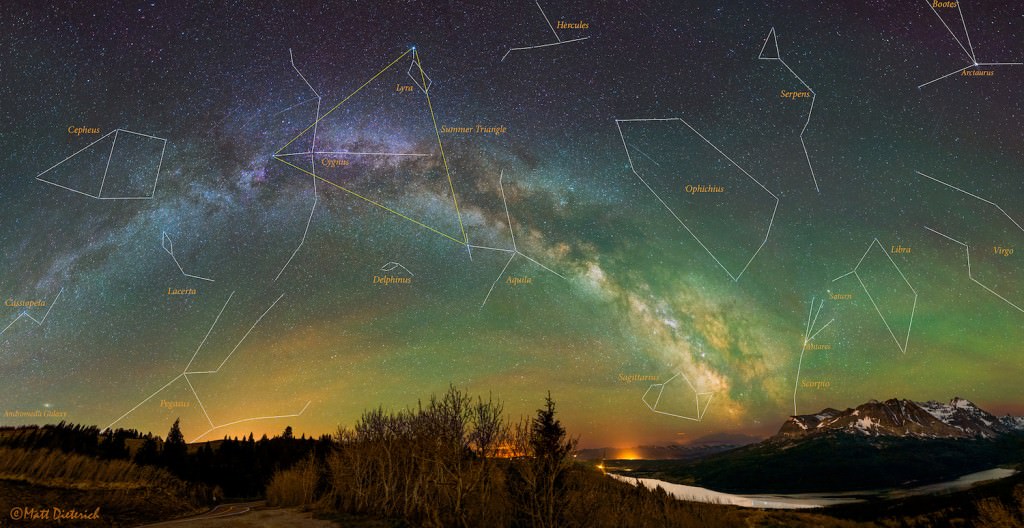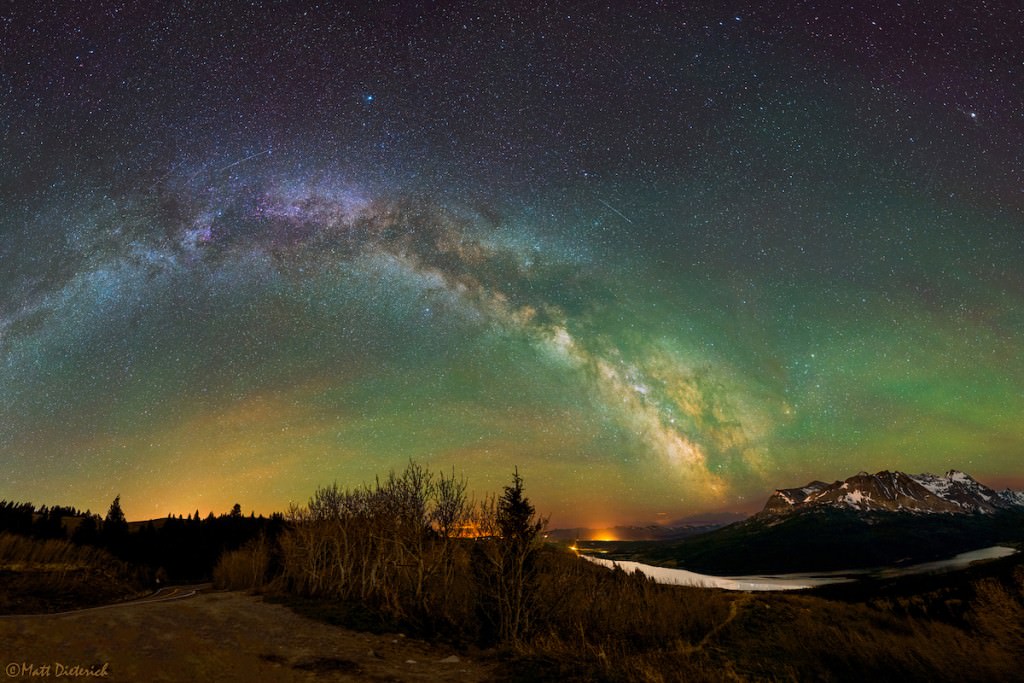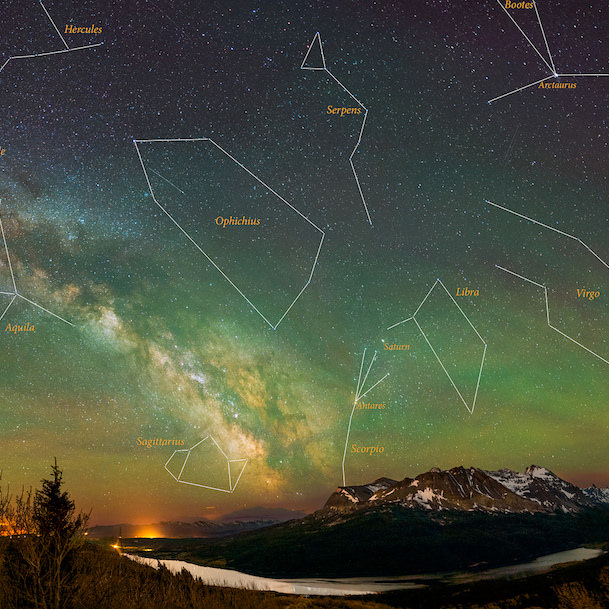Here’s an amazing photograph of the Milky Way by astrophotographer Matt Dieterich. He took the image a step further, however, and identified all the constellations you can see close to the Milky Way.
You’ll want to click this image and see a bigger version.

Right down near the horizon is Sagittarius – it looks like a teapot, with the Milky Way rising like steam from its spout. Many of the brightest, most spectacular nebulae in the night sky are located around this constellation: the Lagoon Nebula, Trifid Nebula, and the Omega Nebula. The 4 million solar mass supermassive black hole located at the center of the Milky Way is located in this region too.
Further up the Milky Way you can see the three constellations that form the Summer Triangle: Lyra, Cygnus and Aquila.
And right on the left side of the photograph is Cassiopeia, with its familiar “W” shape.
In the lower-right of the image are a few constellations from the zodiac: Scorpio, Libra and Virgo. And if you look closely you can see Saturn making its way across the sky, in the plane of the ecliptic.
If you’re interested in learning about the night sky, I highly recommend you take your time and learn your constellations. These are your wayposts, navigational aides that help you find your way across the Universe, to the wonders right there in the sky above you.
Matt used a Nikon D750 camera with a 24mm f/1.4 lens. The whole image is made up of 20 separate exposures of 15 seconds each, stitched together to make this amazing mosaic. He captured this image from Glacier National Park in Northern Montana.
Here’s the original version, without the highlighted constellations. Once again, you’ll want to click to see the full resolution goodness.

You’ll want to check out the full resolution version on Matt’s Flickr page.
A big thanks to Matt for contributing this picture to the Universe Today Flickr pool. If you’re an astrophotographer, you’ll be in good company, with thousands of other photographers who share their pictures. We’ve got more than 33,000 pictures there now.


And roughly in the direction of the perihelion of Planet Nine, X, Jehoshaphat, etc…